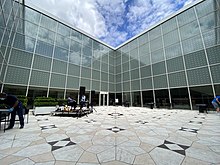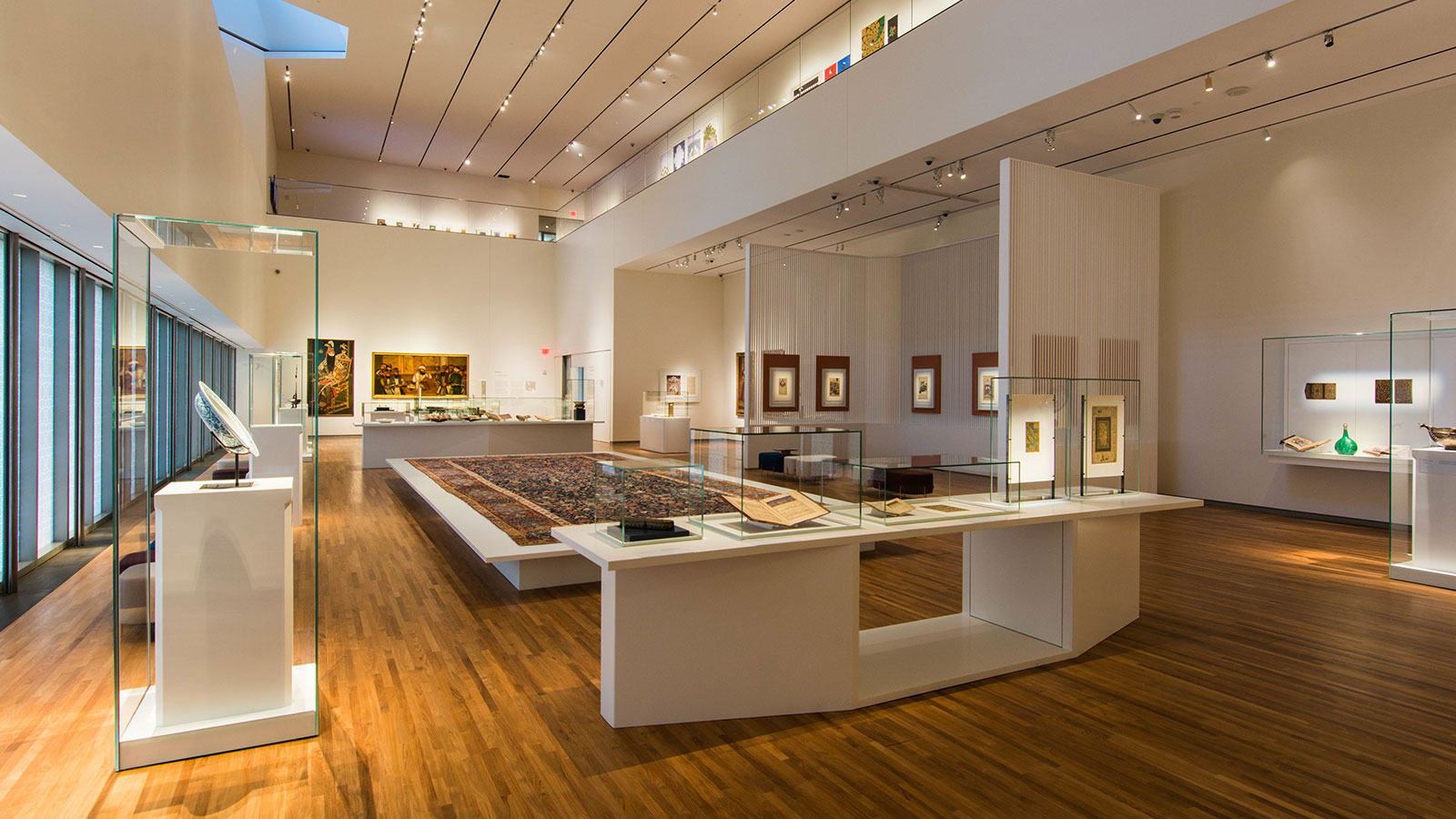Explore the Wonders of Aga Khan Museum: A Toronto, CA Gem
Explore the Rich Cultural Heritage at Aga Khan Gallery: Discover the Wonders of Islamic Art and Society
Nestled in the heart of Toronto, the Aga Khan Museum stands as a testimony to the abundant cultural heritage of Islamic art and culture. It is within these walls that one can really value the ceramic custom of Islamic civilization via its beautiful porcelains, or dig into the insights of Islamic literary works and scholarship via the illuminated manuscripts on screen.
Museum Style: A Sanctuary of Islamic Layout
The Aga Khan Gallery showcases an amazing blend of contemporary style and conventional Islamic design, producing an oasis that personifies the charm and elegance of Islamic society. The museum's architecture is a testimony to the rich heritage and imaginative customs of the Islamic globe.
Developed by distinguished designer Fumihiko Maki, the Aga Khan Museum stands as a stunning building masterpiece. The building's outside features a series of interlacing geometric patterns, mirroring the details and accuracy that are characteristics of Islamic layout. Making use of light and shadow develops an exciting impact, evoking a sense of calmness and harmony.
Inside the museum, visitors are greeted by a light-filled and roomy room, embellished with intricate calligraphy and geometric patterns. The use of materials such as sedimentary rock, marble, and timber more enhances the sense of beauty and majesty.
The gallery's galleries are thoughtfully made to showcase a diverse collection of Islamic art, consisting of ceramics, manuscripts, textiles, and paintings. Each gallery is meticulously curated to provide a comprehensive understanding of the cultural value and artistic accomplishments of Islamic worlds throughout background.
Along with the primary structure, the Aga Khan Gallery additionally features perfectly designed yards, supplying site visitors with a tranquil exterior space to attach and show with nature.
Masterpieces of Islamic Calligraphy
Exquisite examples of Islamic calligraphy poise the halls of the Aga Khan Gallery, showcasing the mastery and creativity of this old form of composed expression. Islamic calligraphy holds a considerable area in the Islamic imaginative tradition, acting as a way to wonderfully convey the words of the Quran and other religious messages.
The Aga Khan Gallery is home to an amazing collection of calligraphic works, including pieces from numerous historic periods and areas. These masterpieces demonstrate the variety and advancement of Islamic calligraphy in time. Visitors can admire the accurate and intricate strokes, the harmonious setup of letters, and the sophisticated compositions that make each item a visual joy.
Islamic calligraphy is not simply a form of decorative art; it is additionally a spiritual method. The calligrapher must possess not just technical ability however also a deep understanding of the spiritual messages they are transcribing. With their work, calligraphers aim to communicate the elegance and power of the magnificent word.
The Aga Khan Museum's collection of Islamic calligraphy provides visitors a special chance to appreciate and recognize this old art form. It enables us to discover the abundant cultural heritage and the profound significance of calligraphy in the Islamic globe. Through these masterpieces, we can get a much deeper understanding right into the beauty and spirituality of Islamic art and society.

Textiles and Carpets: A Tapestry of Islamic Virtuosity
Featuring a captivating display of complex styles and meticulous craftsmanship, the Aga Khan Museum takes visitors on a trip right into the world of Islamic artistry through its collection of fabrics and carpets. These exceptional fabrics and rugs showcase the abundant cultural heritage of Islamic people and supply a glimpse into the artistic traditions that have been passed down through generations.
Textiles and rugs hold a considerable area in Islamic art, not just for their aesthetic charm but additionally for their historical and cultural relevance. They played a vital role in Islamic societies, serving as ornamental items in homes, churches, and even as status icons. The Aga Khan Gallery's collection includes a variety of carpets and fabrics, each standing for various periods and areas of the Islamic world.
These styles display the mastery of Islamic artisans that painstakingly wove intricate patterns utilizing various weaving strategies. They offer a feeling of heat and comfort, showing the importance of carpets in Islamic cultures as petition carpets and icons of friendliness.

Ceramics: The Ceramic Practice of Islamic Civilization
With a rich history spanning throughout Islamic human beings, the Aga Khan Museum showcases the complex ceramic custom that has actually prospered throughout the Islamic world. Ceramics have played a significant role in Islamic art and society, offering both decorative and practical functions (Aga Khan Museum). The pottery custom of Islamic human being is characterized by its phenomenal craftsmanship, exquisite styles, and diverse styles
Islamic ceramics incorporate a variety of types, including vessels, floor tiles, and architectural aspects. These objects display an exceptional degree of precision and interest to detail, showing the proficiency of Islamic potters. The methods utilized in the development of Islamic porcelains differ, with some items being wheel-thrown, while others are built or hand-built. Glazing and decor techniques, such as underglaze paint, lustreware, and calligraphy, additionally improve the elegance and intricacy of these ceramics.
Among the distinguishing characteristics of Islamic ceramic is its usage of flower and geometric motifs. These designs are frequently motivated by nature, with aspects such as flowers, leaves, and creeping plants being delicately woven into the patterns. Islamic porcelains additionally feature calligraphic engravings, which can be spiritual in nature or communicate poetic knowledgeables.
The Aga Khan Gallery houses a comprehensive collection of Islamic ceramics, offering site visitors with a chance to discover the rich heritage and creative success of Islamic potters. Via these porcelains, one can acquire understanding into the social, historical, and technological developments of Islamic human being, as well as appreciate the charm and craftsmanship of these exceptional artworks.
Lit Up Manuscripts: Insights Into Islamic Literary Works and Scholarship
Islamic illuminated manuscripts offer useful understandings right into the literary works and scholarship of Islamic people. These manuscripts are perfectly crafted artworks that integrate calligraphy, miniatures, and decorative aspects to develop aesthetically spectacular books. They were produced by skilled scribes and artists who meticulously duplicated and illustrated essential messages, consisting of the Quran, Hadiths, verse, and clinical treatises.
One of one of the most renowned instances of Islamic illuminated manuscripts is the Shahnama, or Publication of Kings, which is a legendary rhyme created by the Persian poet Ferdowsi in the 10th century. This manuscript is enhanced with detailed minis that show scenes from the legends and stories included within the rhyme. It not only offers a look right into the literary traditions of the Islamic world however additionally reveals the artistic techniques and styles of the moment.
Islamic illuminated manuscripts also played a significant role in the transmission of expertise and ideas. They were commonly utilized as educational devices, with the text and illustrations functioning as a way of conveying intricate ideas and concepts. These manuscripts were highly valued and treasured by intellectuals and scholars, who acknowledged their value in preserving and disseminating expertise.
Verdict
In final thought, the Aga Khan Gallery provides an exciting journey via the rich social heritage of Islamic art and society - Aga Khan Museum arts. From its magnificent style to the work of arts of calligraphy, textiles, porcelains, and lit up manuscripts, the museum gives important understandings into the diverse traditions and i was reading this accomplishments of Islamic civilization. It is a real sanctuary of Islamic style and a must-visit for anybody curious about exploring the marvels of this influential and vivid society
It is within these wall surfaces that one can genuinely value the pottery tradition of Islamic world with its charming ceramics, or delve into the insights of Islamic literature and scholarship with the lit up manuscripts on screen.The Aga Khan Gallery's collection of Islamic calligraphy provides site visitors a distinct chance to value and recognize this ancient art form.With a rich background covering throughout Islamic civilizations, the Aga Khan Museum showcases the complex ceramic practice that has actually prospered throughout the Islamic globe.Islamic illuminated manuscripts offer valuable insights right into the literary works and scholarship of Islamic civilization.In final thought, the Aga Khan Gallery offers a fascinating trip with the abundant cultural heritage of Islamic art and society.
Please visit one of our local supporters -  The Repair Store Iphone Repair Shop In North York